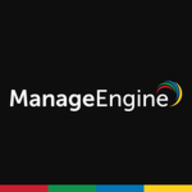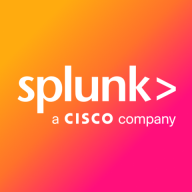

Splunk Enterprise Security and ManageEngine Log360 compete in the security information and event management category. Splunk Enterprise Security has an upper hand due to its scalability, integration capabilities, and advanced analytics, making it more suitable for larger organizations. Meanwhile, ManageEngine Log360 appeals to smaller companies with budget constraints, offering a modular approach and cost-effective solutions for specific compliance needs.
Features: Splunk Enterprise Security is recognized for its comprehensive security capabilities, including robust data management, risk-based alerting, and user behavior analytics. It integrates seamlessly with other enterprise tools, providing advanced security analytics and incident response features from a single dashboard. ManageEngine Log360 offers features like user behavior monitoring, modular architecture, and compliance reporting, allowing organizations to choose specific components such as cloud monitoring or UBA. Its cost-effective design is ideal for organizations focusing on specific compliance areas.
Room for Improvement: Splunk Enterprise Security could enhance user-friendliness, manage costs more effectively, and improve integration and automation capabilities. It also faces challenges in standardizing the management of different sources. ManageEngine Log360 has room to enhance real-time monitoring, streamline its deployment process, and expand AI functionalities and cloud integrations.
Ease of Deployment and Customer Service: Splunk Enterprise Security supports a variety of deployment options across cloud environments but often requires skilled personnel due to its complexity, leading to mixed customer support reviews. ManageEngine Log360 is primarily on-premises and easier to deploy, receiving positive feedback for its reliable customer support, though improvements are needed in technical documentation.
Pricing and ROI: Splunk Enterprise Security is considered expensive, mainly suited for large enterprises that can leverage its extensive features for a justified ROI through enhanced security operations and rapid threat detection. ManageEngine Log360 is budget-friendly with subscription-based pricing, appealing to smaller organizations by providing good ROI through reduced security management expenses. Each product aligns with different organizational needs and budget considerations.
If unauthorized personnel attempt to add logs, the monitoring informs the administrator, enabling them to act promptly, leading to savings in both time and money for the company.
The documentation for Splunk Enterprise Security is outstanding. It is well-organized and easy to access.
We couldn't calculate what would have been the cost if they had actually gotten compromised; however, they were in the process, so every investment was returned immediately.
On average, my SecOps team takes probably at least a quarter of the time, if not more, to remediate security incidents with Splunk Enterprise Security compared to our previous solution.
The solutions they provide are valuable.
We have paid for Splunk support, and we’re not on the free tier hoping for assistance; we are a significant customer and invest a lot in this service.
I have had nothing but good experiences with Splunk support, receiving timely and helpful replies.
We've had great customer success managers who have helped us navigate scaling from 600 gigs to 30 terabytes.
The technical support from ManageEngine is very good.
We currently rely on disaster recovery and backup recovery, which takes time to recover, during which you're basically blind, so I'm pushing my leadership team to switch over to a clustering environment for constant availability.
They struggle a bit with pure virtual environments, but in terms of how much they can handle, it is pretty good.
It is easy to scale.
They test it very thoroughly before release, and our customers have Splunk running for months without issues.
Splunk has been very reliable and very consistent.
It provides a stable environment but needs to integrate with ITSM platforms to achieve better visibility.
Log360 currently cannot gather information from Intune logs or cloud-integrated systems.
Improving the infrastructure behind Splunk Enterprise Security is vital—enhanced cores, CPUs, and memory should be prioritized to support better processing power.
Splunk Enterprise Security is not something that automatically picks things; you have to set up use cases, update data models, and link the right use cases to the right data models for those detections to happen.
For any future enhancements or features, such as MLTK and SOAR platform integration, we need more visibility, training, and certification for the skilled professionals who are working.
The price is suitable from a perspective of different pricing options.
I saw clients spend two million dollars a year just feeding data into the Splunk solution.
The platform requires significant financial investment and resources, making it expensive despite its comprehensive features.
I find it to be affordable, which is why every industry uses it.
All mandatory regulatory compliance reports are available with the integrated system, and companies can easily customize reports without coding to meet their policy or reporting requirements.
This capability is useful for performance monitoring and issue identification.
I assess Splunk Enterprise Security's insider threat detection capabilities for helping to find unknown threats and anomalous user behavior as great.
Splunk Enterprise Security provides the foundation for unified threat detection, investigation, and response, enabling fast identification of critical issues.
| Product | Market Share (%) |
|---|---|
| Splunk Enterprise Security | 8.7% |
| ManageEngine Log360 | 1.9% |
| Other | 89.4% |


| Company Size | Count |
|---|---|
| Small Business | 13 |
| Midsize Enterprise | 2 |
| Large Enterprise | 1 |
| Company Size | Count |
|---|---|
| Small Business | 110 |
| Midsize Enterprise | 50 |
| Large Enterprise | 257 |
Log360 is your one-stop solution for all log management and network security challenges. It is an integrated solution that combines EventLog Analyzer and ADAudit Plus into a single console to help you manage your Active Directory auditing and network security easily.
Splunk Enterprise Security delivers powerful log management, rapid searches, and intuitive dashboards, enhancing real-time analytics and security measures. Its advanced machine learning and wide system compatibility streamline threat detection and incident response across diverse IT environments.
Splunk Enterprise Security stands out in security operations with robust features like comprehensive threat intelligence and seamless data integration. Its real-time analytics and customizable queries enable proactive threat analysis and efficient incident response. Integration with multiple third-party feeds allows detailed threat correlation and streamlined data visualization. Users find the intuitive UI and broad compatibility support efficient threat detection while reducing false positives. Despite its strengths, areas such as visualization capabilities and integration processes with cloud environments need enhancement. Users face a high learning curve, and improvements in automation, AI, documentation, and training are desired to maximize its potential.
What Are the Key Features of Splunk Enterprise Security?In specific industries like finance and healthcare, Splunk Enterprise Security is instrumental for log aggregation, SIEM functionalities, and compliance monitoring. Companies leverage its capabilities for proactive threat analysis and response, ensuring comprehensive security monitoring and integration with various tools for heightened operational intelligence.
We monitor all Security Information and Event Management (SIEM) reviews to prevent fraudulent reviews and keep review quality high. We do not post reviews by company employees or direct competitors. We validate each review for authenticity via cross-reference with LinkedIn, and personal follow-up with the reviewer when necessary.